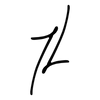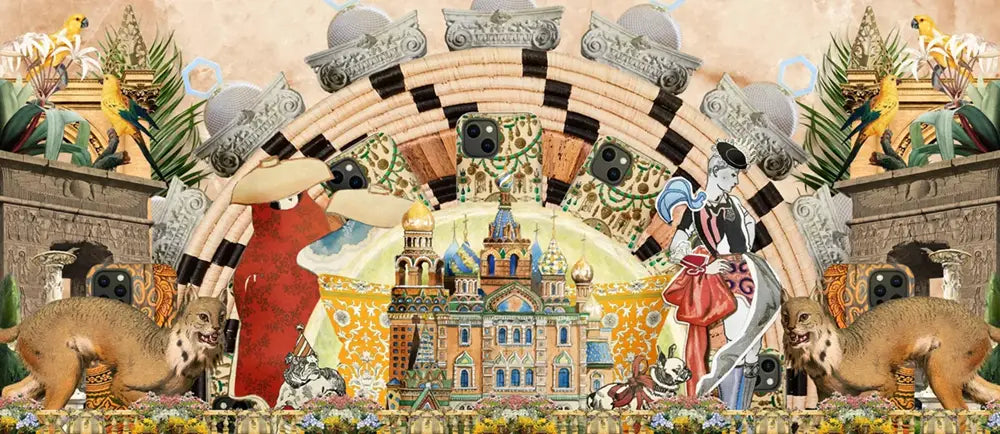Beneath the paned vaults of Paris’s natural history sanctum, Eugène Séguy did not collect insects—he transcribed them. Each winged organism became both emblem and equation, refracted through a gaze trained by pigment and precision.
Born of fin-de-siècle France and trained as a miniaturist, Séguy carried brushes into the anatomical unknown. By 1919, he had cleaved open an entire department for Diptera at the Muséum national d’Histoire naturelle. Yet it wasn’t just the number of specimens that defined him—2.5 million and counting—but the way he captured their structures in pochoir prints, where science became syntax and color its conjugation.
His illustrations, governed by both taxonomic fidelity and the formal grace of Art Nouveau, translated musculature into movement, venation into visual rhythm. What emerged wasn’t decoration, but declaration: that even the humble fly, often overlooked, contains a symmetry as deliberate as any architectural frieze, and just as enduring.
Key Takeaways
- Eugène Séguy fused entomology with early 20th-century visual aesthetics, rendering Diptera with chromatic intensity and structural clarity.
- His foundational work in scientific illustration leveraged miniaturist techniques, pochoir methods, and rigorous taxonomic alignment.
- Through massive specimen collection and global research contributions, he redefined the scientific understanding of Diptera across continents.
- Séguy’s artistic techniques were never embellishment—they served taxonomy directly, aligning scientific exactitude with printmaking craftsmanship.
- Though misidentified with the unrelated E.A. Séguy, Eugène’s visual and scientific legacy remains intact, influencing both entomology and design disciplines.
Miniaturist Among Specimens
Eugène Séguy entered the world in 1890, as France tilted between industry and ornament, a nation wrapped in ivy and steam. His first discipline was not biology but the brush: trained as a miniaturist painter, he came of age wielding pigment in spaces smaller than a postage stamp. Each stroke trained the eye, each surface demanded patience. This devotion to scale—this insistence that nothing was too small to matter—would later define his entomological work.
By the close of the First World War, Séguy stepped into the Muséum national d’Histoire naturelle, a building echoing with the ghosts of Buffon and Lamarck. At just 29, he was granted custodianship over a discipline that barely existed: Diptera. No formal section yet housed the flies. He created one. With notebooks filled edge-to-edge with wings and limbs, he walked its marble corridors as both archivist and artist. Within months, he began incorporating historic holdings—specimens traced to Meigen, Macquart, Pandellé—into the growing collection. What followed was not an expansion but an eruption. Walls filled. Drawers thickened with pins. The Diptera section outpaced its blueprint.
And still he drew.
On expeditions through Europe and North Africa, he carried ink as surely as any net or vial. Taxonomy became both practice and ritual. Each insect was rendered by his hand—its bristles, its ocelli, its venation—mapped with the same care once reserved for saints on vellum. Scholars later noted that Séguy stood within a lineage of naturalists who drew what they named. But few carried the tradition forward with such obsessive consistency. He did not sketch. He committed. Every image stood as record and reverence.
In Paris, his name became synonymous with Diptera. In practice, he was building more than a collection—he was constructing a cathedral to smallness. A place where scale reversed its value, and the tiniest life was rendered monumental by observation.
Anatomy in Stencil, Precision in Color
In the hands of Eugène Séguy, an insect did not simply appear—it crystallized. Wing by wing, segment by segment, he carved presence out of pigment. But the tools were not the soft wash of watercolor nor the mechanical pull of lithograph. He chose phototypie. In this labor-intensive stencil process—akin to pochoir but governed by rigor, not flourish—each hue had to be separately applied by hand. Plates from his 1920 Papillons series gleam like theatrical sets frozen mid-movement: butterflies hover in circular choreography, their forms structured into natural hierarchies, yet styled with a symmetry that echoed the vegetal undulations of the Art Nouveau and the architectural boldness of Art Deco.
The insects didn’t just float—they aligned. Their bodies were ordered by shared anatomy, even as their coloration seduced the gaze. Séguy’s collaborations with Tolmer Éditeur were more than artisanal; they were governed by draftsmanship. He personally annotated proof after proof, marking where the sienna should deepen or the ultramarine pull back. It was less about palette than about fidelity to form. His hand—shaped by years of miniature painting—could translate the iridescence of a beetle’s carapace into ten shades, each trapped behind a stencil, each layered in sequence to catch the exact shimmer of thorax under sun.
His figures begin with linework en creux—not decorative flourish, but anatomical baseline. From there, the layering begins. Charcoal lines hold structure; colored washes amplify what taxonomists would call “diagnostic traits.” But even in his most decorative arrangements, the logic of taxonomy remains. Moths swirl across one plate, not by whimsy, but by morphological kinship. Antennae curve in near-unison; wing shape links species otherwise separated by terrain. His art seduced without betraying science. The allure of his prints lies not in embellishment, but in their exactitude.
Each page functioned as both record and revelation. Séguy did not simplify nature; he clarified it. His technique served neither commerce nor spectacle—it served the idea that an insect’s form, when rightly understood, holds the same internal grammar as any architecture or music. The pochoir method became a kind of taxonomy in pigment—each stencil a segment, each color a sign.
The Taxonomist Who Mapped the Winged World
To call Eugène Séguy prolific is to misstate scale. He did not merely publish—he built ecosystems of thought. Across decades, his pen delivered more than plates: it delivered an entire architecture for dipterology in France. His Recueil d’études sur les Diptères du Globe, composed over nearly thirty years, read not as chapters but as vaults—each volume a gallery of meticulously described forms. The Faune de France series followed, transforming the local into the legible. Then the Atlas des Diptères de France, Belgique, Suisse in 1951—a convergence of photography, draughtsmanship, and classification that remains on entomological shelves not as relic but as reference.
He did not describe; he defined. Over 3,000 species were named under his authorship, their diagnostic features inked with precision. Expedition reports from Mozambique, Persia, the Amazon—all return to one nucleus: “M. Séguy.” His keys were indispensable; his illustrations, non-substitutable. Each new expedition, whether French-led or foreign, invoked his frameworks. His knowledge traveled farther than he did.
Within the Muséum national d’Histoire naturelle, the numbers grew monstrous. By the early 1950s, the Diptera collection counted more than 2.5 million specimens, with 8,000 holotypes anchoring its credibility. Thirty thousand species inhabited those cabinets. Under Séguy, the department became less a repository than a geographic consciousness—where drawers mirrored continents, and classification served as a mode of cartography.
Leadership came late. He succeeded Chopard, briefly directed entomology, and quietly receded. But even his withdrawal bore shape: he passed the collection’s care to Loïc Matile, a scholar whose later dominance in nematoceran studies began in the shadows of Séguy’s ink. And even as emeritus, long after any formal duty, he continued to appear in the lab: coat faded, spine bowed, hand steady. Visitors recall the surrealness of it—this figure from the annals still bent over a magnifier, sketching a mid-wing bristle.
He disliked being photographed. When asked, he hesitated. But once, he agreed. Breathing unevenly, he composed himself. The shutter clicked. The gesture was not vanity—it was artifact. The man who rendered flies into form had himself become part of the museum.
Taxonomy as Aura, Insect as Icon
Eugène Séguy's images remain suspended in glass, on page, across textile and pigment—objects of both study and seduction. In scientific annals, he is fixed as the architect of Diptera research in France, but among designers and curators, his plates have become pattern and principle. Colorists trace his gradients; entomologists trace his keys.
Look close: a Mayfly wing burning with ochre edges, a beetle shell modeled like stained glass, a fly’s compound eye rendered with cathedral rigor. No signature is needed. His hand is the proof. In Papillons, he caught structure mid-spin; in his faunal tomes, he gave it name and number. Illustration was not a companion to discovery—it was its twin.
The Muséum has since changed. Archives digitized. Cabinets reorganized. But Séguy’s color plates still surface—on gallery walls, in design anthologies, inside glass cases lined with soft gray board. They hold not nostalgia, but precision. No line is wasted. No hue gratuitous. His plates remain useful, their shapes still speaking to researchers, their hues to patternmakers. What he gave was not replication, but reification: the fly as system, as image, as idea.
Séguy died in 1985. By then, his prints had already left the laboratory. But they never abandoned science. They carried its measurements in their margins. They held its rigor inside their dyes. They whispered nothing—they spoke plainly. Anatomy, seen clearly, could always be beautiful.
Reading List
- Séguy, Eugène. Diptera: Recueil d'études biologiques et systématiques sur les Diptères du globe. Paris: Paul Lechevalier, 1924–1953. Google Play Books.
- Séguy, Eugène. Faune de France: Diptères. Paris: Lechevalier, 1923. Internet Archive.
- Séguy, Eugène. Atlas des Diptères de France, Belgique, Suisse. Paris: N. Boubée, 1951. SUDOC.
- Dupuis, Claude, and Loïc Matile. “La Vie et l’Œuvre du Diptériste Eugène Séguy (1890–1985).” Annales de la Société Entomologique de France 26, no. 3 (1990): 275–285. Taylor & Francis Online.
- “Eugène Séguy.” Wikipedia. Last modified [date]. https://en.wikipedia.org/wiki/Eug%C3%A8ne_S%C3%A9guy.
- “Diptera Collection.” Muséum national d’Histoire naturelle. Accessed [date]. https://www.mnhn.fr/en/diptera-collection.
- “Papillons, Pl. 13.” The Metropolitan Museum of Art. Accessed [date]. https://www.metmuseum.org/art/collection/search/747230.









